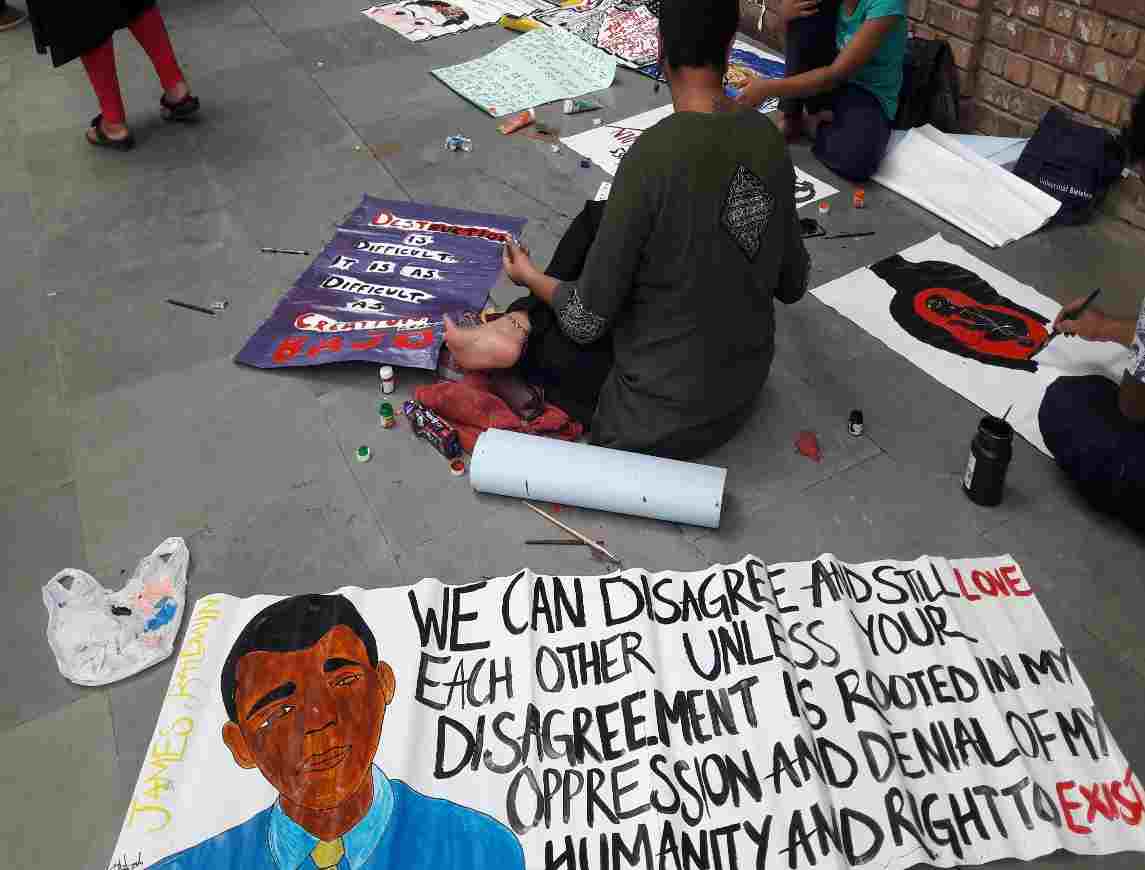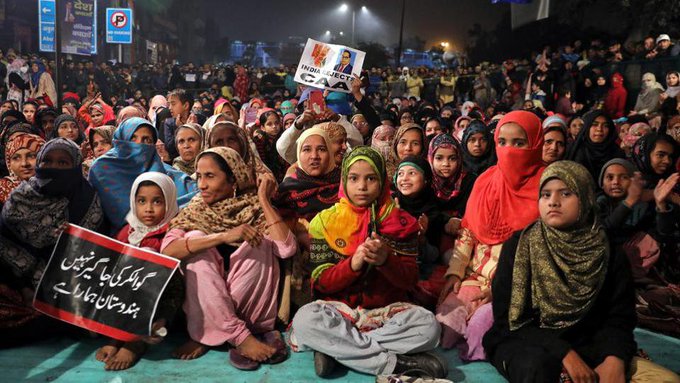Rabindranath Tagore reflecting upon the essence of Indian Public universities asserted in his book ‘Creative Unity’, that an Indian university cannot be just a building and collection of infrastructures, in order to be a university, it should display the ethos of humanity, the culture of dissent, the practise of discussion and debate. A university in its true spirit shall act as a centre for development of civilization (Tagore, 1922). The walls of JNU covered with posters made by students, reflects the true spirit of being a humanistic university. These posters made the walls alive as if speaking to the spectator looking at them, engaging in self-introspection or discussion with self and others.
My first experience with these walls took place in 2016 when I went to JNU, to collect data for a research paper. That first experience with these walls connected me to JNU as a university. The space appeared known, the voices echoing from these walls sounded familiar as I have encountered many of them in my mind before, but could never thought of their artistic and creative expression. These walls introduced me to the poetry of ‘Pash’, the revolutionary poet and rekindled my faith in dreams, dreams of a better and just world. These walls opened up a passage to new knowledge that I was unaware of, the struggle of peasants, the cries of women facing discrimination, the question of caste and so on. These walls compelled me to think beyond myself, my family, my friends, my university and my comfort space and to begin negotiation with of the whole of humanity toward social justice.
And since my first encounter with these walls my affinity towards them only grew and in
each subsequent visit to JNU for my doctoral research work, I have tried to explore these
walls, engage with them and contemplate why this lively culture that provides space to
students to speak their minds beyond classrooms was missing in the universities I had attended so far.
These colourful walls hold multiple pedagogic, curricular and cultural values.
The policy framework since the National Policy of Education 1986 has stressed upon
importance of critical thinking and engaging students in meaningful learning, yet fact driven
teaching and learning has failed to achieve the development of culture of critical thinking in
universities, the foundation for good research. These walls with quotes, pictures, graffiti, poems, slogans and questions written on them compel us to think beyond textbooks.
These walls reflect the thinking and artistic abilities of the students providing an escape from
the hidden hierarchies operating in mundane classroom learning. The walls that sometime s
sing songs of revolution and social change and sometimes howl for the marginalised are an
instrument of critical pedagogy that makes students aware about the oppressive power
structures around them, helps them to visualize the social hierarchies that they all are a part of and enable agency to interrogate the prejudices held deeply at the level of unconsciousness
(Freire, 1996).
As an instrument of critical pedagogy these walls evoke the sociological imagination of
students across the discipline to link private problems to public issues and also to counter the
translation of public issues into private problems (Mills, 1959).
These walls are significant for the scholars of social science and humanities, but are quintessential for the scholars of Science and Technology to make them aware about the society they are living in beyond their laboratories. Being experiential in nature these have has the potential to develop humanistic scientists, driven by positivist logic yet guided by concerns for humanity.
These walls symbolise fire to ignite sleeping minds with ideas within and outside JNU,
appear threatening to the JNU administration. And in order to correct the damage done so far, the administration has started the drive to pull down all the posters and make the walls clean.
The administration has cited the ‘Defacement of Public Property Protection Right-2007’ of
Delhi State Government to reclaim its authority on walls of JNU, that hitherto belonged to
students from all strata of society.The university administration has forgotten that though the outer life of a public university by its structure and funding belong to state, yet its inner life belongs to scholars who have the autonomy to carry out their scholarly pursuits in creative ways (Humboldt, 1970).
The university in its philosophical meaning is a space for engaging scholars in critical
thinking and by this logic its structure should act as means for critical thinking (Kant, 1979).
This new action by JNU administration to rob it of its democratic ethos appears to be directed
by the neo-liberal shift in education governance that brings with itself economic changes in
the structure of institution linked to a radial symbolic cultural project (Saltman , 2019).
This action is a continuation of positivist ideology that rely on standardized tests, pedagogy
and curriculum and operates through techniques of Foucaudian governmentality fostering
disciplinary self-regulation limiting the potential of education for transformation (Foucault,
1991). Yet, the students of this university are adamant on continuing their struggle for
reclaiming affordable Public higher education for all and called for a protest against this
‘Clean the JNU’ drive of administration for beautification of JNU.
On call of JNU student union to protest for, ‘Reclaiming the Walls’ on 22nd and 23rd September, several students gathered outside the School of Social Sciences (SSS) -II and prepared posters that speaks their mind.
Reflecting on the significance of these posters a student from department of Cinema Studies
reflected, “These posters are a symbol of our protest culture. Lot of us have learnt politics
from these posters. The speciality of JNU is that the students’ understanding of education is
not limited to our classrooms. These posters provide a medium for learning outside the
classroom. JNU has an academic culture where students post posters on various kinds of
issues whether they occur on campus or outside. We also have a ‘Parcha Culture’ where we
give out Parchas (pamphlets) on mess dinner tables and discuss. Apart from this, we sit at the
‘dhabbas’ and discuss as to how a particular protest is to be organized. So, all these things
contribute to our education, not just the classrooms.”
Over the last many years, political parties on campus took up certain themes and put
up posters related to them. Those themes were then contextualized in the larger situation, in
that aspect these posters enabled many students to know about issues that otherwise, they
would have never been aware of.
These posters enable expression of all the students across the political spectrum at JNU. As the pulling down of these posters will impact them all, they all have expressed solidarity in
fighting this order by he administration including the ABVP. More than cleaning the walls for ‘beautification’ of JNU, this attempt symbolizes altering the public memory of JNU as a space for resistance, a space to contextualize colonial architecture, a space to enable voice and agency of the marginalized students .
On 23rd September, students will march across JNU to put these posters on walls, to reclaim
their space and will continue to protest until this space belongs to them again.
Monika Maini is a Doctoral Researcher at NIEPA/New Delhi.














